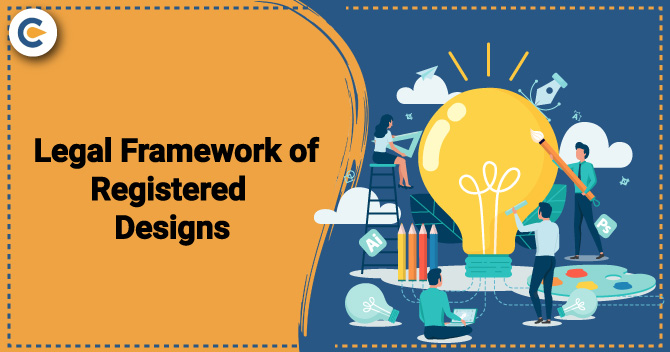In terms of prominence in the global market and economic sector, Design has come a long way. The evolution of Design as a crucial part of a business can be dated back to the early twentieth century. Back then, the primary focus was on a product’s functioning. However, as consumerism expanded, the emphasis switched to the product’s aesthetics and general Design. Today, a company’s intellectual property serves as its identity. A brand’s logo establishes a market linkage of trust and quality. For a long time, the Design of a product was given little consideration. The goal of Design has always been to keep things simple and effective. Before registering a Design, it is vital to know all the Do’s and Don’ts of Design Registration. In this blog, we will discuss Do’s and Don’ts of Design Registration.
Overview of Design Act 2000
Before discussing Do’s and Don’ts of Design Registration, let’s understand the Design Act, 2000[1] and the meaning of Design. The Design Act of 2000 is legislation that governs industrial design protection. The Design Act of 2000 establishes a legal framework for the registration and protection of new, original and not previously published or disclosed designs. The Act allows for the registration of designs, which can be accomplished by submitting an application to the Design office. When a design is registered, the owner gains the exclusive rights to use it and prevents others from using it without their permission.
The Act also allows for the cancellation of the registered Design, which can be started by a third party who can prove that the Design is not new or original or is not registrable under the Act. Furthermore, the Act permits the assignment and transmission of registered designs, as well as the licensing of registered designs to other parties.
What is a Design? – Do’s and Don’ts of Design Registration
The design act of 2000 defines Design in section 2(d) as “features of shape, configuration, pattern, ornaments or composition of lines/colours applied to any article, whether in two dimensional/three dimensional/in both forms, by any industrial process or means, whether manual, mechanical/chemical, separate/combined, which in the finished article appeal to & are judged solely by the eye.”
The Design of an organization is considered intellectual property, and it must be registered to be protected. This will preserve the Design’s aesthetic appeal. A design can be protected under the Act only if:
- The Design must not be previously published or registered anywhere.
- The Design should not resemble any design that is already published or registered.
- The Design should be commercially viable and can be implemented in a product or item via an industrial process.
- The Design is aesthetically pleasing and can be evaluated and judged solely by the naked eye.
- The Design should not have any mechanical functions that contribute to the fundamental functionality of the product.
- The Design should not fall under the category of the Trademarks Act, The Copyright Act or property mark.
What Are the Do’s And Don’ts of Design Registration?
Let’s discuss the Do’s and Don’ts of Design Registration:
Do’s of Design Registration
Following are the do’s that you should keep in mind when registering a design:
- Conducting thorough research before registering your Design: It is essential to confirm that your Design is original and is not infringing any existing designs before submitting it for registration. A comprehensive search will help you avoid any legal complications in the future.
- Seek professional help with design registration: Working with a professional, such as a lawyer or patent agent, can ensure that your design registration procedure goes as smoothly as possible. They can guide you through the procedure & assist you in avoiding any problems.
- Maintain accurate design registration records: It is essential to keep detailed and accurate records of your design registration, including the registration date, application number and any interactions with the registration office. This can help in protecting your rights and defending your Design in the event of legal disputes.
- Ensure that the Design meets the eligibility requirements: Before submitting your Design for registration, ensure that it meets the eligibility conditions. Make sure your Design is unique and new.
- Renew your design registration on time: To prevent losing your rights, make sure you renew your design registration on time. Failure to renew can result in the loss of protection and make defending your Design in legal disputes harder.
- Seek Legal advice for design protection: when it comes to protecting your designs, it’s always a good idea to seek legal advice. A legal expert can guide you through the registration procedure and advise you on how to enforce your design rights.
- Display your registration number: Once a design has been registered, display it on the products and marketing materials. This can help stop people from stealing your Design and protect your rights.
Don’ts of Design Registration
Following are the don’ts that you should keep in mind and avoid doing when registering a design:
- Don’t copy someone else’s Design: It is crucial to produce an original design that does not infringe on the intellectual property rights of others. Copying someone else’s Design might result in legal problems and harm your reputation.
- Don’t delay in registering your Design: It is essential to register your Design as soon as possible in order to protect your rights and prevent others from utilizing or copying it. Delaying the registration process can lead to your Design losing legal protection.
- Don’t assume that your Design is automatically protected: Just because you created a design, a design is not automatically protected. You have to go through the registration process and officially register the Design to receive legal protection and rights in relation to the Design.
- Make sure to pay attention to prior art: Prior art is any publically available design that is similar to yours. Ignoring the previous art can result in the rejection of your design registration application or future legal challenges.
- Pay attention to details: When registering your Design, accurate and complete paperwork is essential. Small mistakes or oversights might lead to a rejection of the application.
- Remember to monitor your Design: Monitoring your Design on a regular basis can help you notice any unlawful usage or violation. This helps in taking legal action to protect your rights and prevent additional harm.
After discussing the Do’s and Don’ts of Design Registration, now let’s discuss the importance of Design Registration in Business and Global Market.
Importance of Design Registration in Business
Design plays a crucial role in the success of businesses across industries. It involves the intentional creation of visual or functional elements that appeal to a target audience and convey a brand’s message. In today’s highly competitive marketplace, businesses that invest in good Design are better equipped to stand out, attract customers, and foster brand loyalty. Here are some key reasons why Design is vital for businesses:
- First Impressions: A well-designed logo, website, packaging, or marketing material can make a lasting first impression on potential customers. When businesses invest in good Design, they can communicate their unique value proposition and brand personality in a way that resonates with their target consumers.
- Brand Recognition: Good Design helps businesses build a strong brand identity which is easily recognizable and differentiated from competitors. Consistent use of colours, typography, and other design elements creates a cohesive brand image that customers can associate with quality, reliability, and trustworthiness.
- Competitive Advantage: Good Design can be a significant differentiator in crowded markets. When businesses invest in unique and memorable designs, they can set themselves apart from competitors and gain a competitive advantage.
- Increased Revenue: Investing in good Design can have a positive impact on a business’s bottom line. A well-designed product, website, or marketing campaign can attract more customers, generate more sales, and increase revenue.
- Product differentiation: In today’s competitive marketplace, businesses need to differentiate their products from those of their competitors. Design can play a critical role in this differentiation by creating products that are not only functional but also visually appealing and unique.
- User experience: Good Design can significantly enhance the user experience, making it easier and more enjoyable for customers to interact with a company’s products or services. This can lead to increase in customer loyalty and repeat business.
- Communication: Design is an effective means of communication, allowing businesses to convey their message to customers in a way that is clear, concise, and visually engaging. This can be particularly important for companies operating in crowded or complex markets.
- Credibility: A well-designed product or service can help establish a business’s credibility, making it more trustworthy and authoritative in the eyes of customers. This can be particularly important for businesses that are just starting out and need to build a reputation.
Importance of Design Registration in the Global Market
With the growth of industrialization, the production of goods became more streamlined and efficient, leading to mass production. This, in turn, prompted a demand for new and innovative designs to differentiate items from competitors. This marked the beginning of the importance of Design in the global market. As the world gets more connected and competition intensifies, businesses are realizing the importance of Design in separating themselves from their competitors and building brand awareness.
The function of Design in establishing a great consumer experience is one of the key reasons for its rising prominence in the worldwide market. Customers are more likely to engage with and remain loyal to businesses that provide a well-designed product, service, or experience. Good Design may help clients gain trust and credibility, leading to improves sales and profitability. The Design may be utilized to create a great consumer experience as well as a tool for innovation.
Design now is a significant aspect of marketing and advertising. A well-designed campaign can help a company stand out and leave a lasting impression in a world where consumers are continuously bombarded with advertising. A strong visual identity, which includes logos, colour schemes and typography, can help a business to become more identifiable and remembered. The Design has evolved into a tool for businesses to express their values and personality to customers. The Design of a brand can express a message about the company’s ideals, such as sustainability, innovation or customer-centricity.
Conclusion
After discussing the Do’s and Don’ts of Design Registration, it is concluded that Design registration is a vital part of safeguarding your company’s intellectual property. You can boost your chances of successful registration by following the do’s of design registration, such as completing a comprehensive search before registering, consulting with a specialist, keeping correct records, and verifying your Design fulfils eligibility standards. On the other side, you may avoid the potential repercussions and guarantee that your Design is protected by avoiding the do’s of design registration, such as duplicating someone else’s Design, delaying registration and neglecting the value of registration. Design registration is a significant intellectual property, and by taking the time to learn the ins and outs of the procedure, you can secure your designs and offer your company a competitive advantage.
Read Our Article: Design Registration And Protection In India











